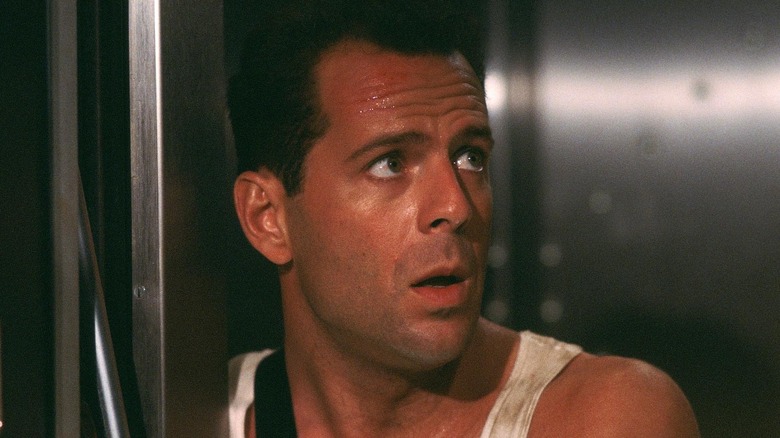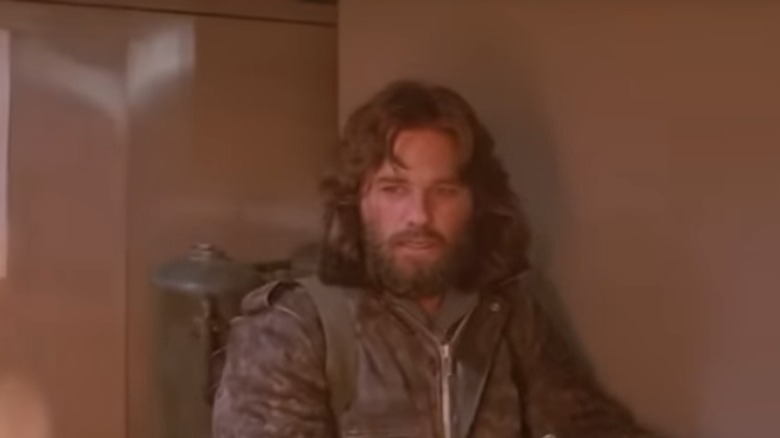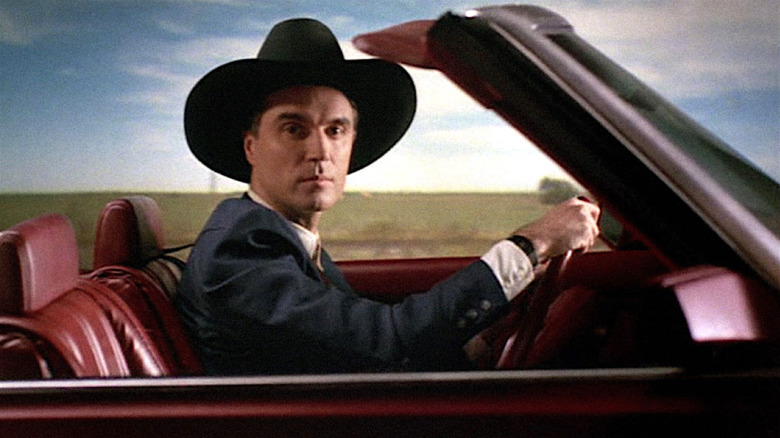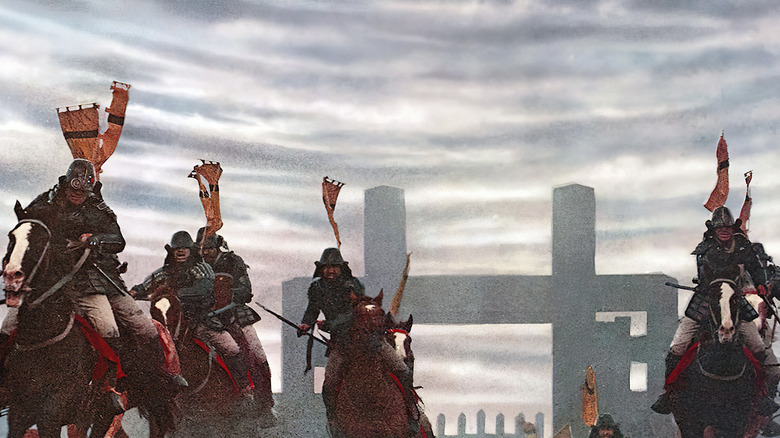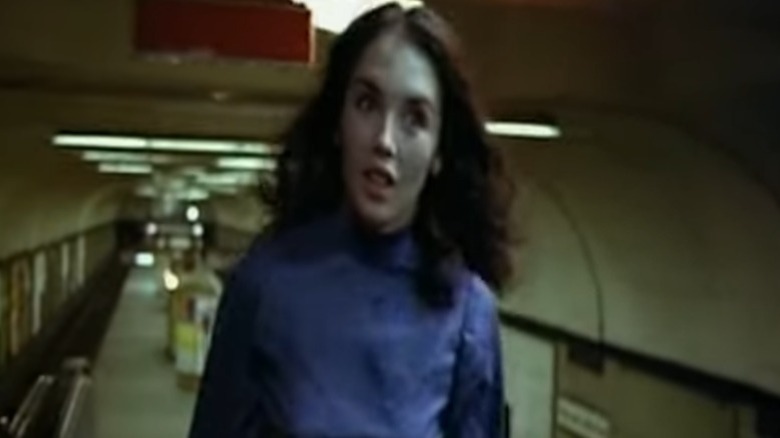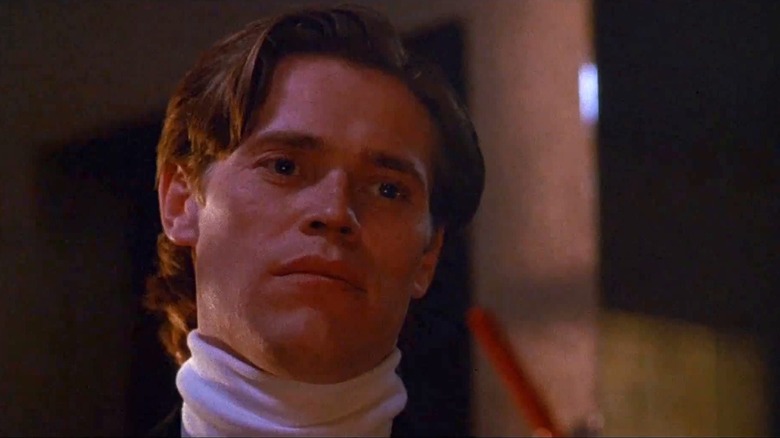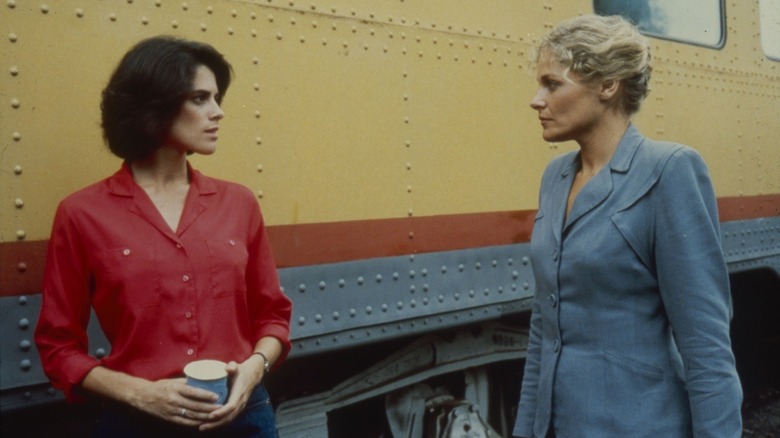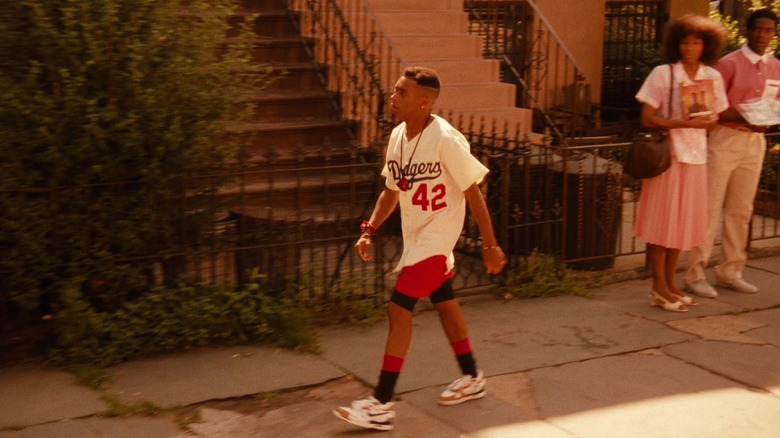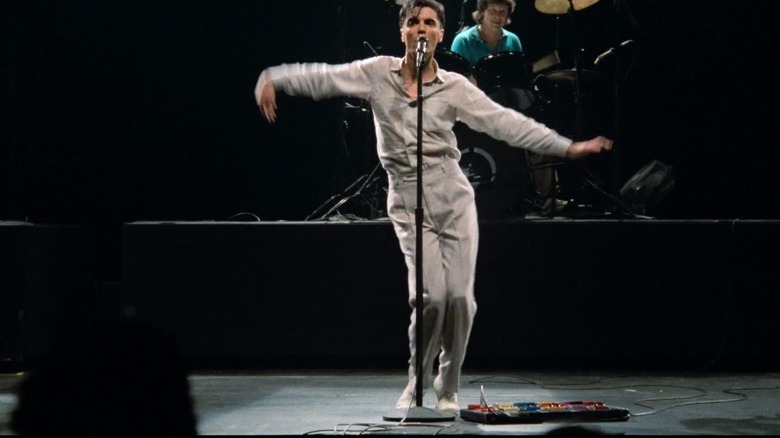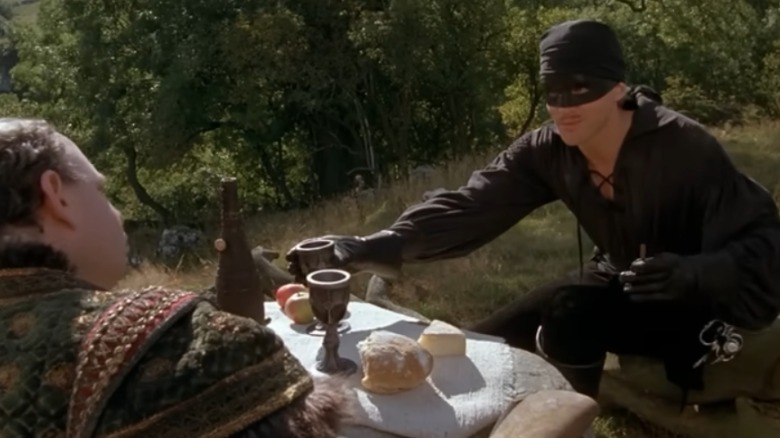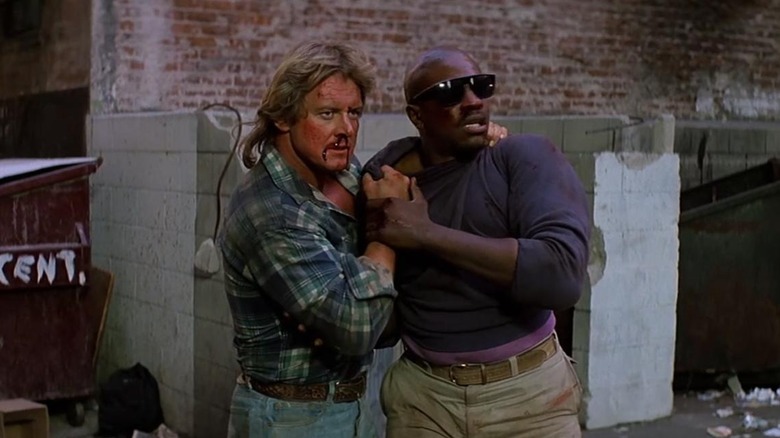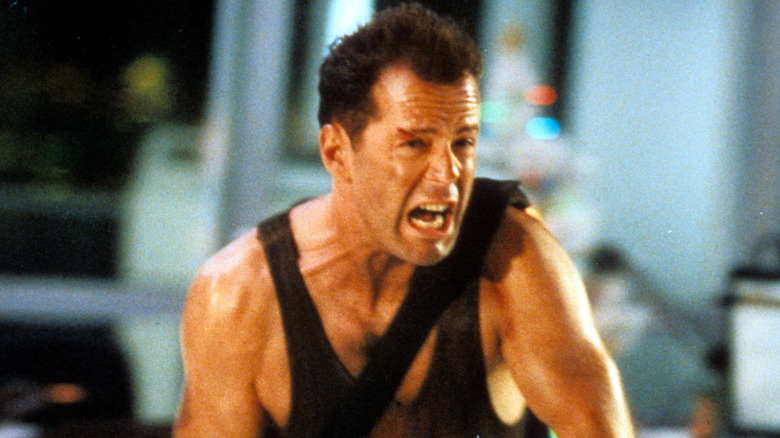The Best '80s Movies Remastered In 4K (That Are Actually Worth Watching)
We may receive a commission on purchases made from links.
With modern technology, the prospect of seeing classic movies transferred to 4K resolution should be an instantly exciting one with no strings attached. After all, these 4K transfers can be a prime way to preserve and appreciate vintage motion pictures. Unfortunately, not every feature gets the glossy treatment of, say, the five best movies to watch on a new 4K TV.
Previous 1080p upgrades of Disney titles like "Cinderella" and "Sleeping Beauty," for instance, garnered criticism for adversely altering the original images. Meanwhile, 4K transfers of James Cameron films like "Titanic" and "True Lies" were lambasted for cleaning up the movies so much that they now look unrecognizable and eerily crisp. Instead of letting viewers appreciate great cinematography, these despised transfers evoked the innate ickiness of generative AI imagery.
Thankfully, not all 4K transfers are created equal. While titles like "True Lies" arrived in this home video format in repellent quality, a slew of beloved 1980s movies have enjoyed satisfying 4K releases. These 1980s gems vary wildly in the aspects that make them must-see motion pictures, while their 4K transfers are equally eclectic in the qualities that make them superb. However, upgrading the video quality of these beloved older pieces of 1980s cinema to 4K doesn't mean zapping them of all their initial visual idiosyncrasies. 4K transfers of "The Thing" and "Die Hard," among others, show there is a luminous middle ground between VHS tape resolution and AI muck.
The Thing
Today, many see John Carpenter's "The Thing" as the best sci-fi horror movie of all-time. However, back in 1982, "The Thing" was initially panned by critics. Many dismissed the project as just high-end schlock heavy on carnage but with little substance. It would take years for this breakthrough in suspense and practical visual effects to get the appreciation it deserved, and decades later, "The Thing" is just as terrifying as ever. A murderer's row of terrifically lived-in performances from character actors like Wilford Brimley and Keith David also make the project's tension-laced atmosphere even more transfixing.
A 4K transfer of "The Thing" finally debuted at the dawn of the 2020s, letting viewers absorb all the finer visual intricacies of the proceedings like never before. If anything, a deluge of modern subpar CG effects work has only made it easier to appreciate the avalanche of impressively tangible makeup and practical effects work in "The Thing" that informed its gnarliest sequences. Reviews of the 4K transfer were universally positive, with particular praise given to the transfer's ability to make the image look crisp and clear without diluting the more intentionally ambiguous and shadowy moments. Some consumers even declared this "Thing" transfer to be a high point for upgrading vintage titles into 4K.
This incredible development injected even more praise into the film's pop culture reputation. Once the recipient of endless snark, "The Thing" has morphed into a beloved project that keeps developing new layers of acclaim with each new generation of home video releases.
True Stories
How can anyone not like Talking Heads music? This band's discography is rife with irresistible songs like "Wild Wild Life" and "This Must Be the Place (Naive Melody)". Equally enjoyable is 1986's "True Stories," a film directed by Talking Heads frontman David Byrne. As one would expect from an artist as unorthodox as Byrne, "True Stories" is no ordinary movie. It's a chill affair chronicling a series of individuals in a made-up Texas town called Virgil. Among those is Louis Fyne, a man played by John Goodman in one of his earliest film roles. Even with a career as dense as his, any ranking of every John Goodman movie from worst to best is bound to have "True Stories" near the top of his filmography.
In recent years, Byrne and cinematographer Ed Lachman oversaw the feature's 4K transfer. This welcome development signaled that "True Stories" wouldn't adversely change as a result of its visual upgrade. Euphoric reviews greeted the debut of this 4K transfer, with special praise heaped on the dazzling color scheme of "True Stories" being easier to appreciate than ever before. Positive notices were also extended towards the transfer's quality on the big screen during its extremely limited 2022 theatrical re-release screenings. It may have been a "Once in a Lifetime" opportunity, but "True Stories" got the exceptional 4K transfer it deserved.
Ran
Want a vivid reminder of why movies are amazing? Just watch any film directed by Akira Kurosawa. Every Kurosawa movie, from his worst to his best, clearly offers rich artistry, performances, and themes. This cinematic master's works, which included "Ikiru," "Seven Samurai," "Drunken Angel," and many others, are especially dazzling visually, with their striking blocking and meticulous camerawork.
Even in a filmography this sterling, however, Kurosawa's 1985 Shakespeare adaptation "Ran" stands out as a particularly mesmerizing affair. Rendered in vivid colors (compared to the monochromatic color scheme of many Kurosawa classics), some of the most breathtaking images and shades of red ever put on film are captured in this magnificent accomplishment. Even those first exposed to "Ran" on VHS could appreciate the feature's grand visual impulses, a perfect parallel to the narrative's expansive scope.
What better way to savor the endless cinematography feats of "Ran" than with a 4K transfer? This version of "Ran" first appeared theatrically in 2016, with viewers immediately praising the results for making the film look brand new. Other reviews applauded how the feature's improvements on previous "Ran" incarnations were intensely intricate, rather than the sweeping, distracting alterations concocted in things like the 4K "True Lies" transfer. A later home video release of this transfer allowed even more moviegoers access to this striking vision of "Ran." With crisp 4K imagery, it's never been easier to appreciate Kurosawa's dazzling visual sensibilities than by watching his 1985 tour de force.
Possession
All forms of cinema deserve proper preservation. It isn't just best picture Oscar winners or the biggest blockbusters that are worthy of clean 4K transfers. The weirdest, most unhinged cinema out there is equally deserving of all the joys of high-definition presentations. Case in point: the 1983 Andrzej Żuławski feature "Possession." This whirlwind fever dream concerns a couple, Anna (Isabelle Adjani) and Mark (Sam Neill), whose marriage crumbles after Anna has an affair. This revelation leads Mark into an investigation that only unveils increasingly bizarre developments rather than answers.
It's all so captivatingly outlandish, with the proceedings anchored by a downright unforgettable lead performance from Adjani. Once you see her fiercely committed work in "Possession," you won't forget it ... or be able to sleep properly for a few nights afterward.
This masterful slice of nightmare cinema received a 4K transfer in the early 2020s. Though Żuławski passed away in 2016, thus ensuring he couldn't fully approve or disapprove of this transfer, the 4K "Possession" restoration still received high marks from moviegoers. Some reviewers grumbled that the limitations of the movie's practical effects were a bit too noticeable now in 4K. By and large, though, the 4K version of this 1980s gem was lauded, especially since its eventual 4K Blu-ray release helped make it available to physical media collectors after the film's previously erratic home video presence. A performance as iconic as Isabelle Adjani's work in "Possession" should never be hard to come by.
To Live and Die in L.A.
Among the challenges facing 1980s cinema was America's political atmosphere. The kind of transgressive, societally-challenging titles that dominated the first half of the '70s suffocated in Reagan-era America. This was an age where cinema was all about brawny dudes beating up baddies from foreign countries. Delving into thorny moral quandaries wasn't on the menu.
So it's no surprise that William Friedkin's "To Live and Die in L.A." failed to catch on when it was released in 1985. The moviegoing scene on which this Willem Dafoe movie appeared was drastically different than the landscape that Friedkin's "The Exorcist" premiered in more than a decade earlier. However, the film has endured over the years as one of the all-time great crime movies. Its striking cinematography (particularly its unforgettable uses of green and red-tinged lighting) has only accentuated the project's legendary reputation.
The 2016 debut of "To Live and Die in L.A." in a standard Blu-ray format was a welcome sight for home video collectors given the title's sporadic (at best) presence on the physical media market in the 21st century. But decades after its initial release, in 2023, "To Live and Die in L.A." made it to home video in 4K. Friedkin oversaw the 4K transfer, a reassuring fact that ensured the movie's specific visual scheme would not be upended. The glorious 4K picture quality of "To Live and Die in L.A." lets modern viewers savor all the finest intricacies of a motion picture that was ahead of its time.
Desert Hearts
Luscious romantic dramas don't get better than "Desert Hearts." A saga of two women falling in love in the 1950s, it's a remarkable production brought to life through vivid direction by Donna Deitch and cinematography courtesy of film industry legend Robert Elswit. Helen Shaver and Patricia Charbonneau's central performances are marvelous to behold, especially in an absorbing final sequence set at a train station that can stand toe-to-toe with the ending of "Before Sunset" in the canon of gloriously bittersweet romantic wrap-ups. It also doesn't hurt that the movie has one of the greatest love scenes ever committed to celluloid. Rich with emotion and peppered with great tiny details from the actors, it's a wondrous intimate creation.
Back in 2017, a 4K resolution transfer was crafted for "Desert Hearts" courtesy of Janus Films and The Criterion Collection. Unfortunately, it's yet to make its way to 4K Blu-ray proper. However, this crisp 4K incarnation of "Desert Hearts" on standard Blu-ray was one of 2017's most celebrated home video releases, with extra praise heaped on how Elswit helped guide the transfer to ensure that "Desert Hearts" arrived in the modern age of home video presentations without losing its original visual intent. "Desert Hearts" has always been a masterpiece, but its modern 4K restoration has allowed its greatest visual intricacies to shine like never before.
Do the Right Thing
Typically, human beings will do anything to distance themselves from anything connected to the hottest days of the year. Who wants to be miserable and covered in sweat? The only time being adjacent to an uber-hot day sounds like a can't-miss proposition is with Spike Lee's 1989 masterwork "Do the Right Thing." Set in Brooklyn's Bedford–Stuyvesant neighborhood on one of the hottest days of the year, the various working-class individuals the story follows always have sweat on their brows and boiling conflict in their hearts. It's a perfect movie, full stop, crammed with a murderer's row of unforgettable performances. Who could ever forget Bill Nunn's transfixing work as Radio Raheem or Ruby Dee's richly lived-in performance as Mother Sister?
Among the many remarkable creative feats in "Do the Right Thing" is director Spike Lee and cinematographer Ernest Dickinson's tremendous visual scheme. The film occupies a discernibly realistic world, yet Lee and Dickinson incorporate decidedly pronounced bursts of color in the production design (like a bright red wall) or stylized camerawork that makes this community come alive. Once "Do the Right Thing" got the 4K transfer treatment at the dawn of the 2020s, film geeks everywhere breathed a sigh of relief. This seminal feature looked as crisp as ever. Retaining film grain from the original 35mm print was especially praised as a subtle but important way to maintain the idiosyncratic visual identity that informed the film's mighty modern pop culture reputation.
Stop Making Sense
"True Stories" wasn't the only magnificent David Byrne movie to drop in the 1980s. There was also the Jonathan Demme-directed "Stop Making Sense," which captured a concert performance from Byrne and the rest of the Talking Heads crew. There are endless reasons why "Stop Making Sense" is now considered a perfect concert film, but the majesty of the "Take Me to the River" sequence is really enough to solidify its reputation.
The performance of this cover is an awe-inspiring sight to behold, chock full of images that will be seared into any moviegoer's brain. Those close-up shots of Byrne endlessly singing the title refrain are utterly transfixing, as is the insane amount of energy exuded by every onstage performer in this sequence. This one performance deftly distills the captivating entertainment and showmanship informing every inch of "Stop Making Sense."
Such a perfect blend of music and cinema deserves to be preserved in an equally terrific presentation, and one emerged in 2023 through a 4K restoration commissioned by A24. This transfer struck a great balance between looking flawless on an IMAX screen and preserving the grain of its original camerawork. To remove all the cinematography "imperfections" of "Stop Making Sense" would remove its distinctly '80s charms. Luckily, A24's transfer made "Stop Making Sense" look better than ever, and audiences could savor that "Take Me to the River" performance like never before.
The Princess Bride
Many outstanding movies are exciting paradoxes. They merge creative elements from entirely different planets that shouldn't work together at all ... yet they produce magic when dropped into one specific movie. So it is with "The Princess Bride." Director Rob Reiner's 1987 fantasy is full of savvy post-modern touches, including a framing device where a grandpa (Peter Falk) reads the "Princess Bride" story to his doubtful and nitpicky grandson (Fred Savage).
The funniest moments in "The Princess Bride" thrive on audience familiarity with vintage fantasy yarns. Yet it also functions beautifully as just a classic, emotionally engaging fairy tale. When Inigo Montoya (Mandy Patinkin) finally confronts his father's murderer, for instance, it doesn't register as a punchline. It's a cheer-worthy moment that works so well because "The Princess Bride" has lured audiences over to its side. Self-referential wit and classical fantasy impulses work beautifully in tandem.
"The Princess Bride" got a 4K transfer in the late 2010s that finally came to physical media in the early 2020s, courtesy of The Criterion Collection. As one would expect from a release overseen by the Criterion folks, the 4K incarnation of "The Princess Bride" was widely praised, especially in contrast to an earlier 2009 HD transfer. Chief among the elements heralded in this transfer was letting audiences appreciate previously murky background details and finer intricacies on the various costumes. Now modern moviegoers could have a richer understanding of why a conceptually contradictory movie like "The Princess Bride" has become a comedy masterpiece for the ages.
They Live
Though "The Thing" is now considered one of the greatest horror movies of all time, its box office failure adversely affected director John Carpenter's career in the following years. Yet he still managed to helm several other iconic 1980s features such as "Christine," "Big Trouble in Little China," and the 1988 satirical thriller "They Live." The latter was a terrific skewering of late-era capitalism and Ronald Reagan's America, with one man, Roddy Piper's Nada, coming into possession of glasses that allow him to see troubling things like subliminal messages in billboards or monstrous alien invaders (disguised as humans) in their otherworldly forms. A race against time to stop these invaders ensues.
"They Live" has been a fixture of the home video scene since its VHS release in the late 1980s. With this title constantly upgraded to the latest home video format, it was only a matter of time until it received a 4K transfer. This came to pass with a Scream Factory release that let "They Live" flourish in 4K with more vivid colors than ever. Even with a bevy of other home video incarnations of "They Live" available, this 4K transfer was widely considered the greatest presentation of the movie to date. Carpenter's cinematic exploits went in unexpected directions in the '80s, but they resulted in movies like "They Live" that still dazzle thanks to 4K's magic.
Die Hard
Too many 1980s action movies have aged about as well (both in themes and fight choreography) as milk left out in the Texas sun in July. The Bruce Willis star vehicle "Die Hard" certainly isn't devoid of the toxic political undercurrents that plagued other brawny '80s features. However, it's also got a witty screenplay and a deluge of winning performances that make it the greatest American action film of the decade.
You can rewatch "Die Hard" endless times and details like Alan Rickman's tremendous performance as Hans Gruber or the screenplay's inspired wringing of maximum tension out of one building still impress. Decades after its release, "Die Hard" still packs a wallop that other action films of the same era now lack.
"Die Hard" devotees got to experience the movie practically for the first time thanks to the release of a transformative 4K transfer in 2018. Things you only notice in "Die Hard" after watching it more than once were more discernible than ever in this edition. Critics observed that this stunning 4K upgrade was an especially welcome sight in terms of picture quality, given the tormented history of "Die Hard" on physical media. Prior subpar releases were blown away by this transfer's fantastically clean imagery, with the freshly restored visuals applauded for making "Die Hard" look brand new without removing its original distinctive visual identity. Plus, watching "Die Hard" in 4K for the first time gives movie geeks everywhere an immediate excuse to revisit this timeless peak of action cinema.
